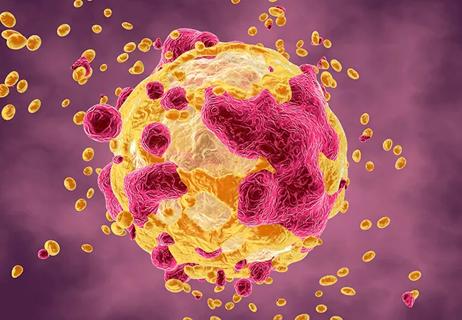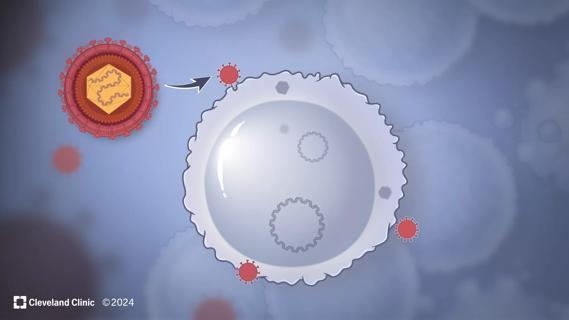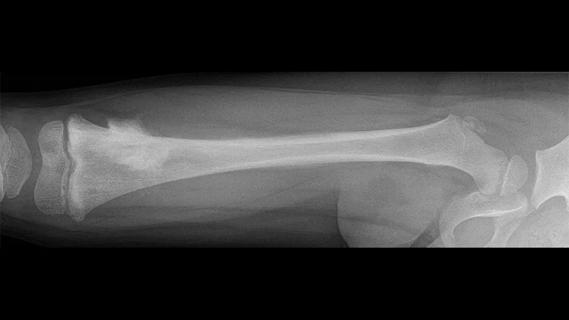Soft tissue pathologist discusses research into incorporating genomic data to improve risk stratification

Advertisement
Cleveland Clinic is a non-profit academic medical center. Advertising on our site helps support our mission. We do not endorse non-Cleveland Clinic products or services. Policy
With more than 100 different subtypes of sarcomas, accurate classification and risk stratification is crucial yet challenging. Even when a pathologist
is able to identify the subtype, it is still not always clear how the sarcoma will behave.
In a recent Cancer Advances podcast, Josephine Dermawan, MD, PhD, shared recent developments in novel genomic risk stratification models. Dr. Dermawan and her colleagues are using DNA changes and genomic changes to improve upon risk stratification.
In addition, Drs. Dermawan and podcast host Dale Shepard, MD, PhD, discussed:
- The role of pathologists
- The difference between carcinomas and sarcomas
- The importance of second opinion consults in pathology
- Shortcomings of existing tumor risk stratification
- The recent study incorporating genetic profiling into risk stratification
- Accessibility of genomic panels
- Next steps in this area of research
Dale Shepard, MD, PhD: How did you go about incorporating genomic changes into a restratification model?
Josephine K. Dermawan, MD, PhD: So as you know, increasingly more and more tumors, they actually receive genomic profiling. So in the molecular laboratory, we look at the sequence of the DNA and see if there are any mutations or changes in the DNA of the tumor. And the reason why we're trying to do that is because traditional system of risk stratification is imperfect. Sometimes there are tumors that we would classify as low grade, but they will still behave aggressively. For example, they might undergo distal metastasis in a short period of time. So that tells us that the way we are doing it traditionally it is a useful system, but it's not always perfect. So we want to see if genomic profiling can help us improve the way we risk stratified tumors.
And so for this study, we look at the DNA sequencing of a large series of soft tissue and uterine leiomyosarcoma, and we try to look at what kind of genetic changes correlate with worse overall and progression free survival, and we're able to identify some changes that can help potentially propose a risk stratification that is based on genomics.
Dale Shepard, MD, PhD: Again, you looked at soft tissue disease as well as uterine disease, and I guess when you came into this, we know they're sort of called the same sort of sarcoma, but they kind of behave differently. Were you surprised by what you found in terms of risk stratification?
Josephine K. Dermawan, MD, PhD: Yeah. So part of the study is we try to compare how the two different ways of risk stratification perform. So one of the main findings in the study is that for uterine leiomyosarcoma using criteria such as tumor size and tumor grade, they actually perform equally well compared to genomic risk stratification. However, for soft tissue leiomyosarcoma seems like tumor size didn't really correlate with worse survival, at least in the cohort that we study. And it seems like using genomic risk stratification, it may potentially do a more accurate job to risk stratify soft tissue leiomyosarcoma. Of course, the caveat is that this also observation would need to be validated in an external cohort. We were able to validate our genomic risk stratification model in an independent cohort from the AACR GENIE cohort, but that cohort didn't include clinical pathologic information, and so it would be essential to see how they compare.
But the purpose of our study is not to say traditional way of doing this should be thrown away. That's really not the goal of the study. It really is to see if there are additional ways to risk stratify tumors and maybe they can be complementary. For example, if we have a leiomyosarcoma that was called low grade just by pure morphology. However, if we sequence it and we see things like ovoid mutation, ATRX mutation for example, we know that the presence of those mutations are significantly associated with worse survival in at least two large cohorts. So then maybe with this information we might consider treating the tumor a bit more aggressively because it might behave worse than what the histology might suggest.
Advertisement
Advertisement

Personalized reconstruction is an alternative to leg amputation or flail limb

Machine learning models assess intraoperative tissue perfusion

Previous studies, trial aims and the potential role of immunotherapy

Innovative construct restores function after resection of softball-size chondrosarcoma

For kids with painful, growing lesions in the arm, leg or pelvis

Cleveland Clinic researchers discover what drives – and what may halt – virus-induced cancer

Biologic approaches, growing implants and more

Invasion of the lumbar spine and iliac vein made resection risky